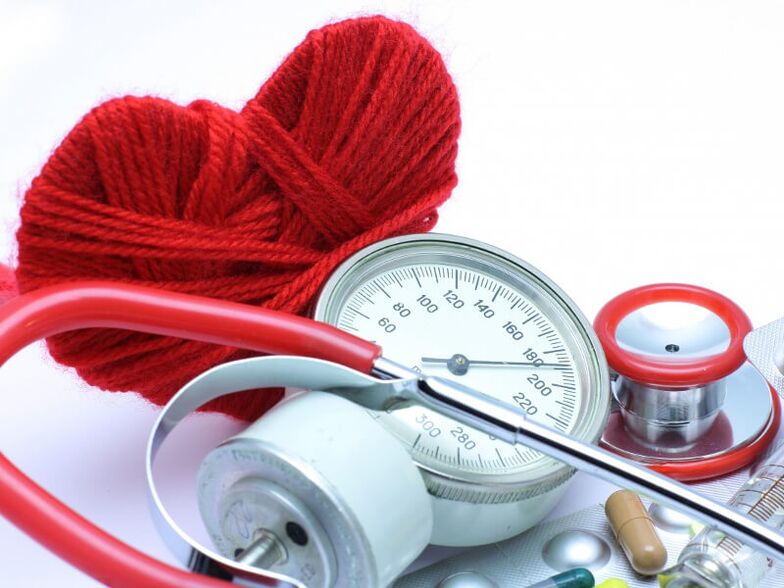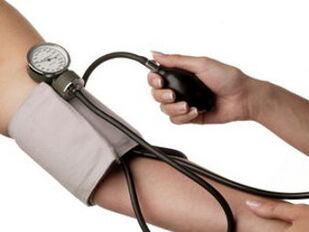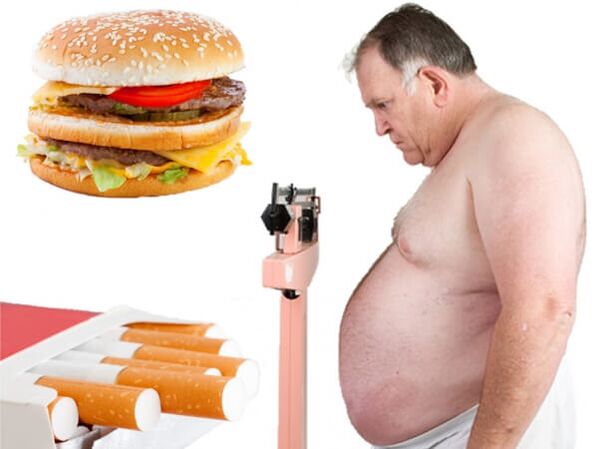
Hypertension (hypertension) is the most common disease of the cardiovascular system.
Hypertension is rapidly "getting younger", today it is a disease not only of the elderly, but often occurs in pregnant women, and is becoming more common among adolescents.
What is Arterial Hypertension? The answer to this question can be found in the definition of the condition of the disease.
It is characterized by chronic high blood pressure, when the highest value (systolic pressure) exceeds 140 mm Hg, and the lowest (diastolic pressure) exceeds 90 mm Hg. subject to at least three measurements made at different times in a person who is in a calm state.
The optimal blood pressure indicator is 120-130 per 80-89 mm Hg, if they are higher, then it is necessary to begin to actively treat hypertension. However, few diagnose the disease at an early stage: about 35% of men and 55% of women know about their high blood pressure, only half of them are involved in the treatment of arterial hypertension, and only 6% of the male population and 20%of the female population controls their stress.
The sooner arterial hypertension is identified and controlled, the lower the risk of getting complications of hypertension (ischemic disease, atherosclerosis, kidney disease, low testosterone levels in the blood, erectile dysfunction) in the future.
Hypertension can be one of the causes of impotence in men.
It is useful to note
The main task of hypertension treatment is to control the constant blood pressure to prevent more serious health problems, as the disease cannot be completely cured.
Is hypertension dangerous
With prolonged high blood pressure, the walls of blood vessels thicken and lose the ability to relax, which impedes normal blood supply and, consequently, the saturation of tissues and organs with oxygen and other nutrients, and a decrease in its functional activity. Let's consider in more detail whether hypertension is dangerous:
- Hypertensive crisis- the most common exacerbation of arterial hypertension, can occur in a relatively satisfactory state of the patient, and is due to the psychophysical stress of the patient. Developing at high speed, a hypertensive crisis dramatically increases blood pressure, causing severe headache, dizziness, tachycardia or arrhythmias, nausea and vomiting. At risk are those who are weather dependent, being in the pre-climate period.
- myocardial infarction- complicated by hypertension can occur within minutes and lead to death. The main symptom is a prolonged attack of pain.
- Stroke- circulatory disorders in the cerebral vessels, cerebral hemorrhage, characterized by sudden severe headache, which is quickly accompanied by other symptoms of the brain: impaired speech, twisted mouth, paralysis of one part of the body. If immediate measures are taken and capillary bleeding is performed in case of hypertension, then this process can be reversed.
- angina pectoris- The disease is less temporary. Violations of the heart cause severe emotional burden, too much work. Accompanied by severe dull pain in the chest, feeling unwell, can cause frequent vomiting.
- Heart failure- a chronic condition of the heart muscle, in which it is unable to supply oxygen to the organs and tissues of the body. It is characterized by the overall weakness of the patient, in which he is unable to withstand basic physical activities: free lifting, walking, etc.
- Coronary artery disease- insufficient blood supply to the coronary arteries, resulting in inadequate cardiac nutrition. With careful adherence to prescribed hypertension treatment, it is not difficult to prevent the development of coronary heart disease.
- renal failure- impaired kidney function, destruction of neurons, partial inability to remove toxins from the body. Arterial hypertension is the second leading cause of acute or chronic renal failure after diabetes mellitus.
- visual disturbances- occurs due to disruption of blood supply to the retina and optic nerve. A sudden increase in blood pressure can cause spasm of the arteries that feed the optic nerve, damaging the integrity of the retinal canal. Hypertension is dangerous with pathologies such as retinal or vitreous hemorrhage: the first leads to the formation of black spots in the field of vision, the second leads to loss of vision in the affected eye.
To avoid any complications of hypertension so dangerous, it is necessary to consult a doctor in a timely manner and conduct an examination, which will help determine the stage of development of the disease and prescribe the necessary treatment.
Stages of hypertension: classification, form

With the nature of the assessment of one or more criteria, several classifications of hypertension are used.
Allocate developmental stages such as origin, form of leakage, blood pressure level, degree of damage to target organs.
The main task in making a diagnosis of arterial hypertension is to distinguish the nature of the disease. There are two major groups here:
- primary or essential hypertension - increased blood pressure is the main cause;
- secondary or symptomatic arterial hypertension - high blood pressure caused by diseases of other organs or systems: kidneys, heart, endocrine glands, lungs, thyroid gland.
According to experts
Treatment of symptomatic hypertension cannot occur without treatment of the disease that causes it, and begins with it. In some cases, along with the removal of the underlying disease, hypertension also disappears.
Also, blood pressure, up to a hypertensive crisis, may increase due to improper intake of certain medications, with neurosis, excessive caffeine consumption and other stimulants.
When diagnosing essential hypertension, doctors usually classify the disease according to blood pressure levels to choose the right tactics for treating essential hypertension. In international practice, there are three degrees of hypertension:
- Hypertension 1 degree- systolic pressure 140−159 mm Hg, diastolic pressure 90−99 mm Hg. A mild form of the disease, in which a sudden change in blood pressure is characteristic, can both return to normal on its own and rise again.
- Hypertension 2 degrees-systolic 160-179 mm Hg, diastolic 100-109 mm Hg. Moderate form, more prolonged pressure increase, rarely down to normal values.
- Hypertension 3 degrees- systolic above 180 mm Hg, diastolic above 110 mm Hg. The severe form, stable stress at the level of pathological indicators, proceeds with severe complications, and is difficult to correct with medication.
Separately, isolated systolic hypertension is isolated, it occurs in about one-third of the elderly with arterial hypertension. This form is caused by age -related loss of large duct elasticity, often accompanied by myocardial infarction, coronary heart disease, congestive heart failure and left ventricular hypertrophy. Blood pressure indicator: systolic up to 160 mm Hg. and above, diastolic - below 90 mm Hg.
Useful information
It is worth noting another small group - the so -called "white coat hypertension", when, under the influence of psycho -emotional factors, a person's blood pressure increases only at the time of its measurement by medical workers. In such cases, the diagnosis is clarified by repeated measurements of pressure in a quiet home environment.
In addition to the degree of hypertension, when making a diagnosis, risk factors are also assessed that can lead to complications of the cardiovascular system and the stage of the clinical course of the disease:
- Transistor hypertension (early stage).. The increase in pressure is periodic, returning to normal values; drugs that lower blood pressure are not used.
- labile hypertension. The increase in blood pressure is directly related to the provoking factor: stress, severe psychological or physical stress. To stabilize the stress, medication is needed.
- Stable arterial hypertension. Persistent increase in stress, where serious supportive therapy is used.
- Malignant form. Increasing the stress to a very high level, the disease progresses rapidly and leads to the development of serious complications.
- Crisis form. Periodic hypertensive crises against a background of normal or slightly elevated pressure are characteristic.
Assessment of the severity of hypertension and the risk of complications is possible only on the basis of a thorough examination: general and biochemical tests, ultrasound of the heart and other organs, ECG, examination of the fundus. Complete examination of patients with arterial hypertension is usually performed during inpatient treatment.
High blood pressure is the main warning symptom of hypertension in both men and women.

Symptoms of hypertension may not be present for a long time, and if a person does not always use a tonometer, he can find out about his disease, having begun to treat its complications.
Often hypertension has no manifestations at all, except for its main symptom - persistent high blood pressure.
Moreover, the concept of "continuous" or "chronic" is key here, because in some situations (stress, fear or anger), stress can increase, and then return to normal on its own.
However, few control their stress levels, so you should pay attention to the following symptoms, which indicate the development of arterial hypertension:
- Headache. Often shown in the occipital, parietal area or in the temples. It can occur at night and shortly after waking up. As a rule, it increases with mental or physical effort. Sometimes accompanied by swelling of the eyelids and face.
- Dizziness. Sometimes even with a little physical effort: coughing, turning or tilting the head, a sharp increase.
- Pain in the heart area. Occurs not only with emotional stress, but also during rest. Both prolonged pain, squeezing pain and short-term, stabbing pain are possible. Do not disappear after taking nitroglycerin.
- Strong heartbeat.
- Noise in the ears.
- Visual impairment: hood, fog, "flies" in front of the eyes.
- Arterial disease: cold feet, intermittent claudication.
- Swollen feet. Indicates a violation of renal excretory function or heart failure.
- Dyspnea. It occurs during physical exercise and during rest.
It is important to know
Hypertensive crisis - anxiety caused by excessive levels of high blood pressure, can also be classified as symptoms of 2nd and 3rd degree hypertension. At the same time, patients with grade 1 arterial hypertension, strictly following the doctor's recommendations and following a diet for hypertensive patients, can achieve complete disappearance of unpleasant disease symptoms.
It cannot be said that the symptoms of hypertension in men and women are much different, but in fact, men are indeed more susceptible to this disease especially in the age group of 40 to 55 years. This is partly due to differences in physiological structure: men, unlike women, have a greater weight, respectively, and the amount of blood circulating in their ducts is much higher, which creates favorable conditions for high blood pressure.
On the other hand, women are more responsible for their health, proper lifestyle. The number of stressful situations at work, alcohol intake and cigarettes smoked is greater in men, but this no longer refers to the symptoms of hypertension, but to the cause of its development.
Treatment of hypertension with drugs and folk remedies
Treatment of hypertension, as well as other diseases that are difficult to diagnose and require continuous therapy (diabetes mellitus, allergies, prostatitis and impotence), should be compiled and prescribed only by a specialist. If restrictions on food, salt intake, avoiding alcohol and smoking, avoiding stress and other correctable causes of hypertension do not help normalize blood pressure levels, high blood pressure pills will be prescribed.
When treating hypertension with folk remedies, side effects are usually not present. You don’t have to go to a pharmacy to get an expensive drug and stand in line for a doctor to write another prescription. All you have to do is take some time for yourself, change your diet, and learn how to manage stress.
Causes of high blood pressure and the development of hypertension

The cause of arterial hypertension is still not fully clear; both the body’s internal systems and external factors play an important role in the development of the disease.
The main cause of hypertension is impaired blood circulation through the ducts, limited flow to the left ventricle of the heart. In modern medicine, there is a completely logical explanation for this - structural changes in blood vessels with age, the formation of blood clots and atherosclerotic plaques in their cavities.
If in symptomatic hypertension the cause of hypertension is caused by another disease, then in essential hypertension, i. e. this form is recorded in 85% of cases, the exact cause of hypertension can not be established, it occurs independently.
There are many risk factors that contribute to a persistent increase in blood pressure, it is usually considered a cause of hypertension. This includes:
- Age, for men 55 years of age and older, for women over 65 years of age. With age, the walls of blood vessels lose their elasticity, which increases their resistance to blood flow, as a result, the pressure increases.
- hereditary tendencies.
- The floor. As already mentioned, men are more likely to have hypertension.
- Violations of fat metabolism, obesity (men with a waist circumference of more than 102 cm, women - more than 88 cm).
- diabetes.
- Smoking. It causes blood pressure to rise immediately, and smokers with years of experience are prone to vascular disease.
- Alcohol abuse. The blood pressure of a person who stops drinking is reduced by at least fifteen points.
- Excessive salt intake. Excessive sodium intake, a major component of table salt, is one of the most significant causes of high blood pressure in hypertensive patients: sodium chloride prevents the removal of fluid from the body, which improves the vascular tone of already elevated patients. Remember, the average person consumes three times the amount of salt he or she needs, learning not to add salt to your food.
- Lack of physical activity, inactive lifestyle.
- Exposure to stress.
- Disorders of cholesterol metabolism.
- Inadequate dietary intake of potassium.
- Increased levels of adrenaline in the blood.
- Congenital heart defects.
Various kidney diseases, late toxicosis of pregnant women, regular intake of certain drugs, in some cases this also applies to oral contraceptives, should be associated with the cause of secondary hypertension.
The above risk factors can be divided into two major groups:
- Which can be eliminated on their own or with the help of a doctor: treat obesity, reduce blood cholesterol levels, number of cigarettes smoked, alcohol or salt used, lose weight, and so on.
- Avoid the unlikely: age and hereditary predisposition.
Therefore, those in the second risk group need to closely monitor their health, control and prevent hypertension. And for every person who has at least one of the above factors, constantly monitor blood pressure levels and, of course, lead a normal and active lifestyle.



























